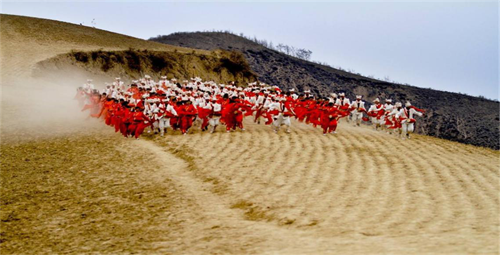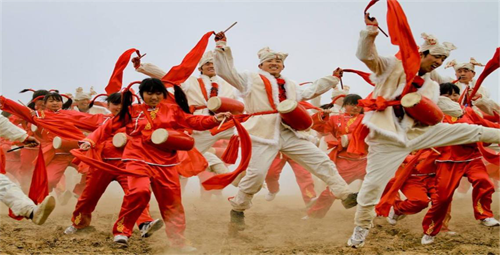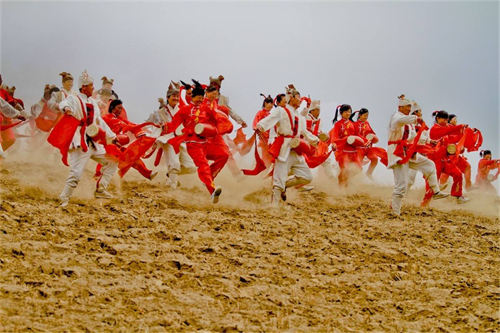The Loess Plateau and Ansai Waist Drum

The Loess Plateau is the biggest and thickest plateau formed by wind in the world, as well as the result of the erosion of wind, moving, and accumulation.
The Loess Plateau covers 40% of Shaanxi Province, thus becoming the first choice of tourist destination for tourists to go sightseeing and researching on the Loess Plateau.
Ansai District is located on the north of the city of Yan’an, Shaanxi Province. It has a vast territory and crisscrossed gullies, with rivers running through it in a zigzagging manner. It is a typical landform of loess plateau. Historically speaking, it used to be an important military post, which functioned as a strategic point on the border to defend foreign invasion.

Waist Drum is a musical instrument that strikes the drum to make sounds. It is a very unique artistic form of folk dance. During Qin and Han Dynasties, in Ansai, Waist Drum functioned to transmit messages, boost the morale of soldiers by beating drums, have celebrations by beating drums and so on. Therefore, soldiers saw a waist drum as important as swords, spears, bows and arrows. As time goes by, Waist Drum has developed from a military instrument to a type of folk dance with which local people pray to God for good wishes, great harvests, and New Year celebrations, so that Waist Drum has become more popular and civil. However, in terms of the style of drum beating and performance, the heroics of soldiers in Qin and Han Dynasties have been kept.

The charming Waist Drum is like a strong storm that sweeps the Loess Plateau. Its heroic and bold motions, sturdy, unrestrained, vigorous and firm dance moves fully represent the simple, plain, brave, and powerful personality and character of the masses living on the plateau in northern Shaanxi.
In 2006, Ansai Waist Drum was listed on the first batch of National Intangible Cultural Heritage List in China.


